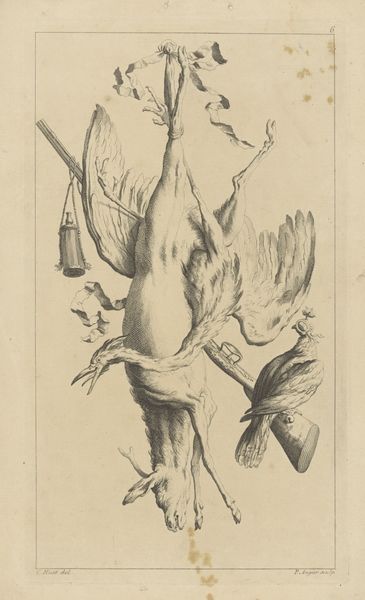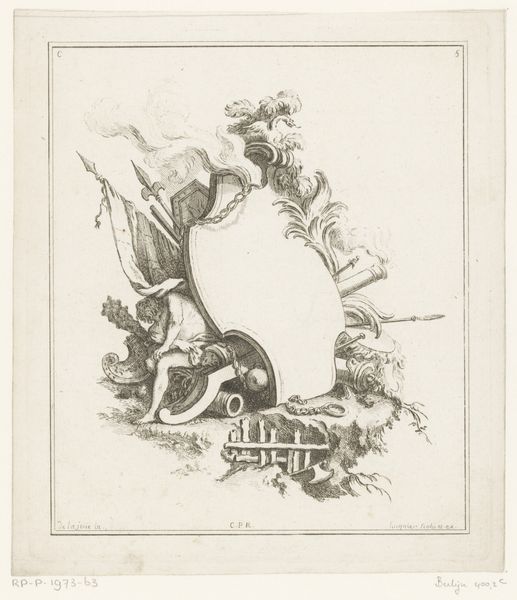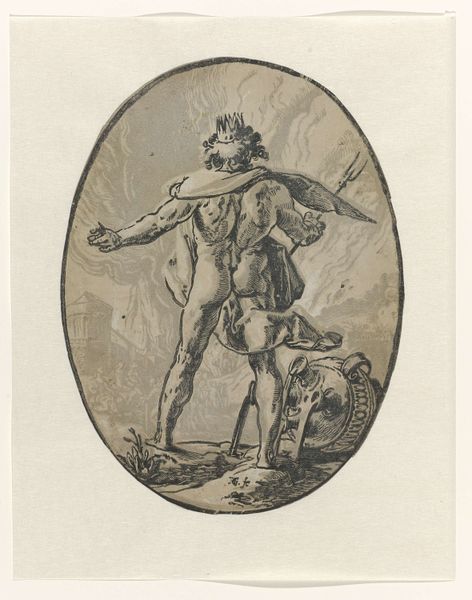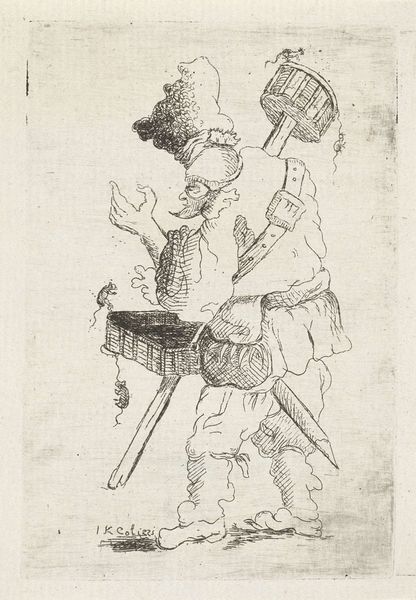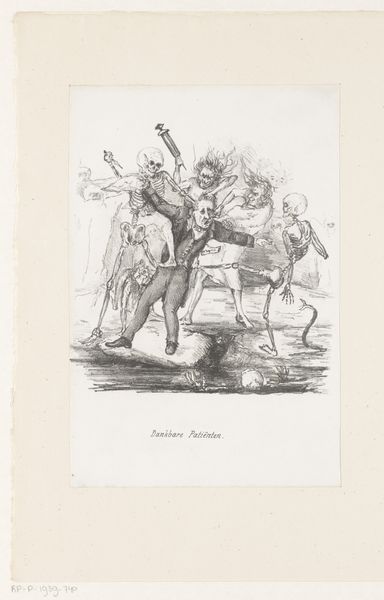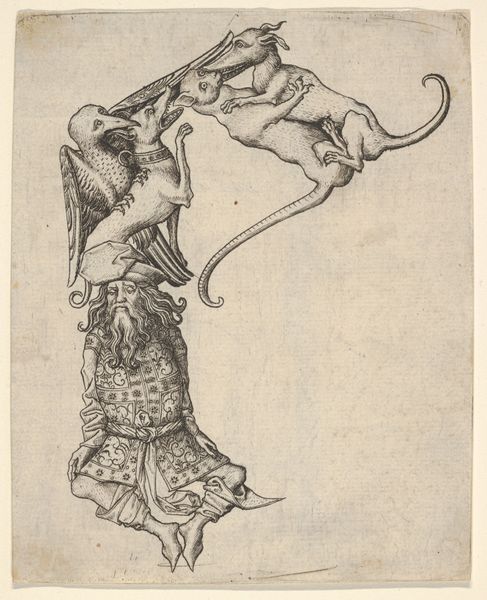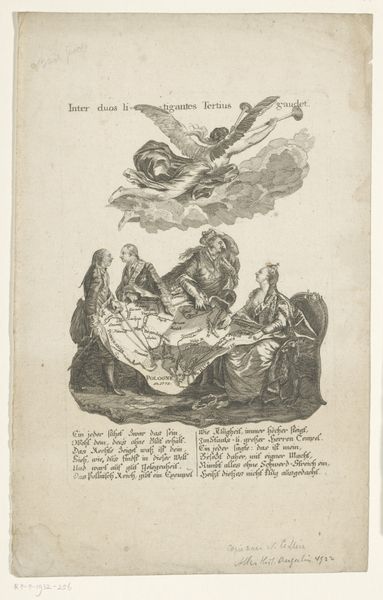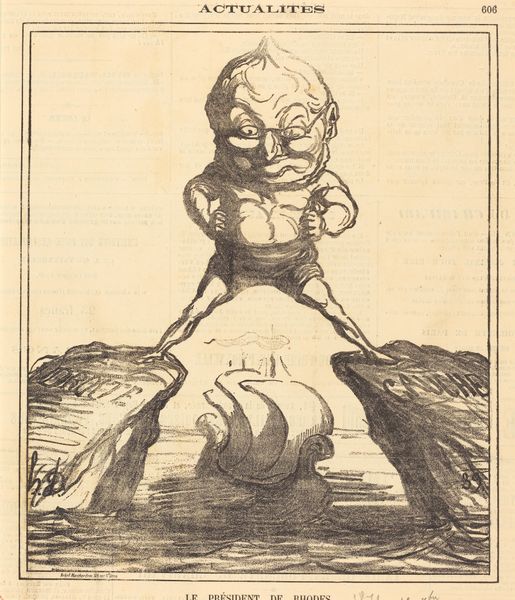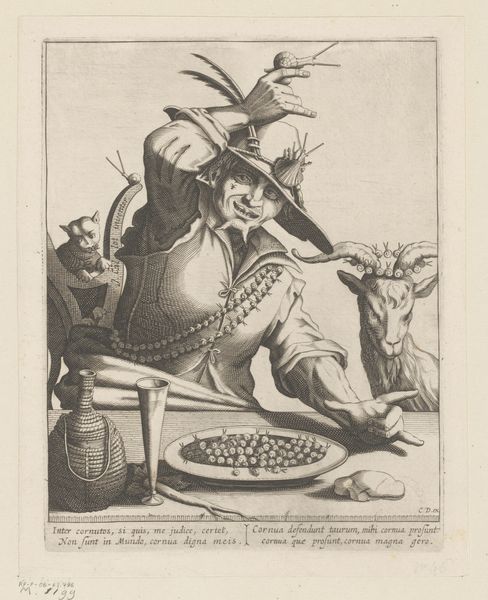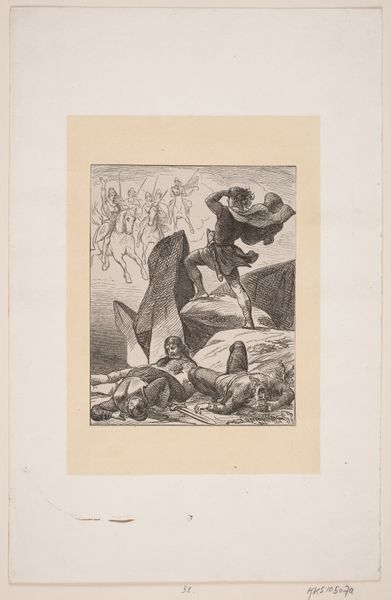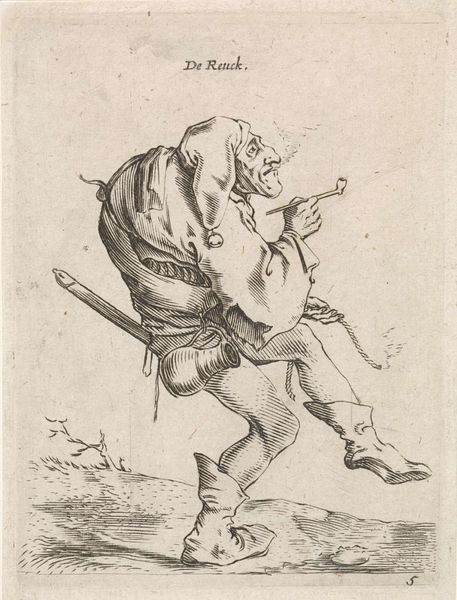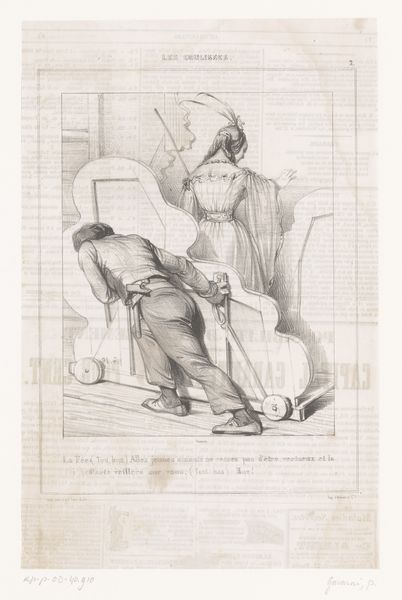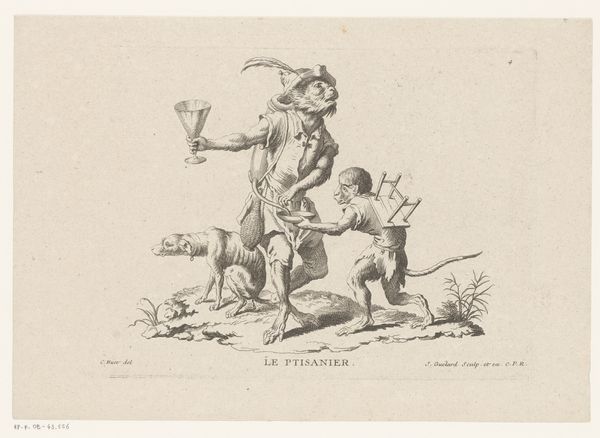
lithograph, print
#
lithograph
# print
#
caricature
#
old engraving style
#
figuration
#
history-painting
Copyright: National Gallery of Art: CC0 1.0
Curator: The work we're looking at is titled "J. Martial Bineau (2nd Plate)." It's a lithograph print by Honoré Daumier, created around the 19th century. Editor: It’s rather brutal! The figure looms over what looks like a demolished art studio, wielding a club with clear destructive intent. It reminds me of iconoclasm, smashing valued symbols to spark societal change. Curator: Indeed. Daumier's caricature highlights Bineau's opposition to the arts budget at the time. Look closely—the club he's holding actually has “Report on the budget of the fine art” written on it. The savage destruction becomes symbolic. Editor: So the image isn’t really about a violent individual; it is about the politics of funding the arts and perhaps, the place of art within French society? Curator: Precisely. This work engages in a larger conversation on who benefits and who suffers under political budgeting decisions. We see echoes of this dynamic in debates today. Editor: The title "Les Représentants Représentés" at the top, which roughly translates to "The Representatives Represented," emphasizes how Daumier held public officials accountable for their choices. He makes these powerful figures answer to their role in cultural life. Curator: It gives us a peek at the time through Daumier's critical gaze. Beyond its social message, it speaks to a historical tug of war between financial restraint and investment in culture that continues in governments. Editor: Seeing this print forces us to consider how images affect our understanding of history and current policies surrounding arts funding. Curator: It urges one to contemplate visual media’s impact, not only on capturing historical narrative but, importantly, the ability to provoke questions and stir public sentiment.
Comments
No comments
Be the first to comment and join the conversation on the ultimate creative platform.
